The Golden Age of Drama: 15 Signature Paintings of Baroque Art
- CARAVAGGIO The Calling of Saint Matthew 1599-1600
- ANNIBALE CARRACCCI, DOMININE, QUO VADAIS? 1602
- ANNIBALE CARRACCI THE LAMENTATION of CHRIST C. 1604
- CARAVAGGIO DAVID with the head of GOLIATH 1609-1610
- ARTEMESIA GENTILESCHI, JUDITH SLAYING HOLOFERNES C. 1612-1616
- PETER PAULIN RUBENS RAPE THE DAUGHTERS of LEUCIPUS 1618
- FRANCISCO de ZURBARAN SAINT SERAPION 'S MARTYRDOM 1628
- PETER PAUL RUBENS, JUDGMENT of PARIS C. 1636
- GEORGES DE LA TOUR THE PUNITIVE MAGDALENE C. 1640
- REMBRANDT THE NIGHTWATCH 1642
- NICOLAS POUSSIN THE ABSURDITY OF THE SABINE WOMEN 1643
- CHARLES LORAIN, EMBARKATION of the Queen of Sheba 1648
- DIEGO VELAZQUEZ, A PORTRAIT of INNOCENT X 1650
- DIEGO VELAZQUEZ LAS MENINAS 1656
- ELISABETTA SIRNANI, PORTIA WOUNDING HER THICK 1664
The 17th century saw the decline of the Renaissance style and the Mannerist art movements. A new movement was born, characterized by drama and grandeur. The Baroque Period, named after “barroco”, a Portuguese term for a pearl with an irregular shape, centers extravagantness and intention to instill awe among its audience.
Caravaggio, Rembrandt, and other Baroque artists created striking compositions emphasizing the contrast between dark and light. Some artists of this period created dramatic effects using motion, stories from the Bible, and ancient mythology. We have compiled a list that illustrates the dramatic nature of this period and the various approaches used by painters to achieve it.
Scroll down to view a list of 15 famous Baroque works of art.
CARAVAGGIO The Calling of Saint Matthew 1599-1600

Caravaggio The Calling Of Saint Matthew 1599-1600
St. Matthew's Calling is still one of Caravaggio's best-known paintings. The free will and natural meeting of persons marked a significant departure from the idealistic Mannerism. The characters are dressed in modern clothing and appear lifted from a contemporary genre rather than a religious painting.
Caravaggio is known for using light and shade, which is the hallmark of his style. The sunlight follows the chapel’s architecture, hands, and the windows. The light creates drama but also acts as a symbol of God's hand asking Matthew to join Him.
ANNIBALE CARRACCCI, DOMININE, QUO VADAIS? 1602
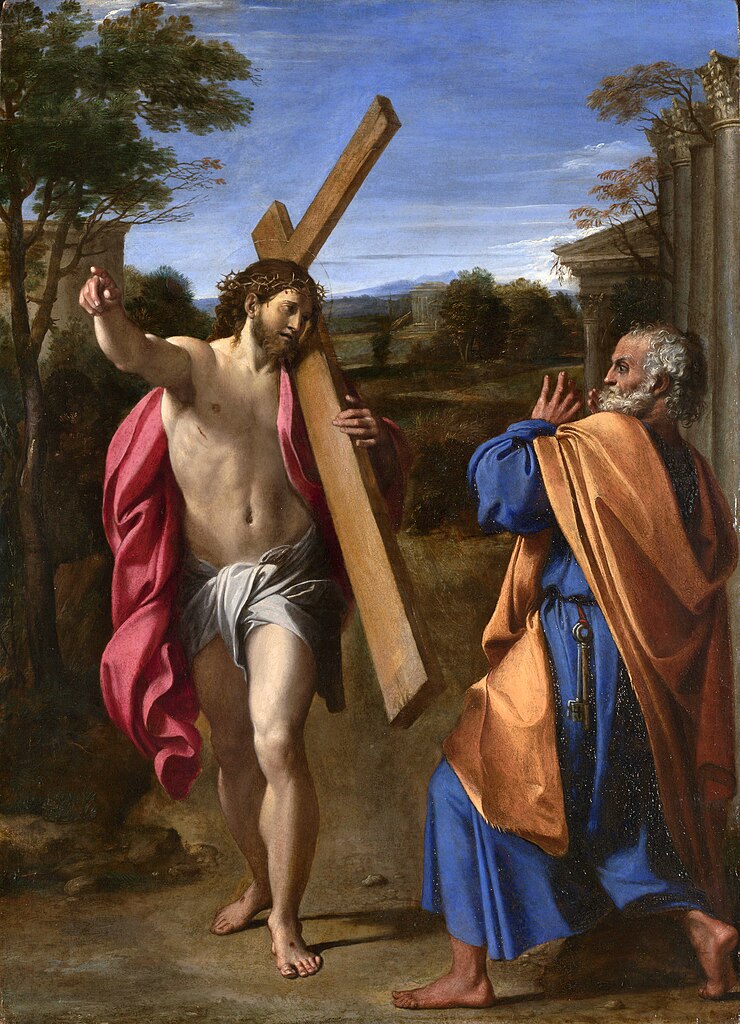
Annibale Carraccci, Dominine, Quo Vadais? 1602
Annibale Caracci, a 17th-century Baroque painter overshadowed by Caravaggio, is still regarded today as one of the most important Baroque artists.
His style was influenced by the idealistic styles of Mannerist and Renaissance, but he also created a Baroque drama with significant figures and vivid compositions. The story Domine, Quo Vadis? is a good example of Carracci's style. Two brightly colored figures are narrating it through bold gestures.
ANNIBALE CARRACCI THE LAMENTATION of CHRIST C. 1604
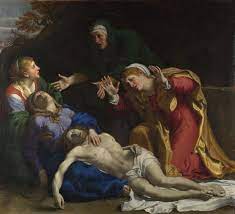
Annibale Carracci The Lamentation Of Christ C. 1604
Lamentation of Christ is another of Carracci’s masterful compositions. He depicts Mary Magdalene and the Virgin Mary lamenting the death of Christ. Two other women, who could be Mary Cleophas or Mary Salome, may also be shown. Three figures are layered, one on top of another. The other two, crouched to the right, have their hands raised in an emotional gesture, expressing the horror that is happening.
CARAVAGGIO DAVID with the head of GOLIATH 1609-1610
.jpg)
Annibale Carracci The Lamentation Of Christ C. 1604
David With the Head Of Goliath is an artistic masterpiece painted when Caravaggio was exiled after he murdered a man in a tennis match. Caravaggio's characteristic tenebrism is used to create an oil painting that shows a young David staring pensively at Goliath's severed head.
ARTEMESIA GENTILESCHI, JUDITH SLAYING HOLOFERNES C. 1612-1616
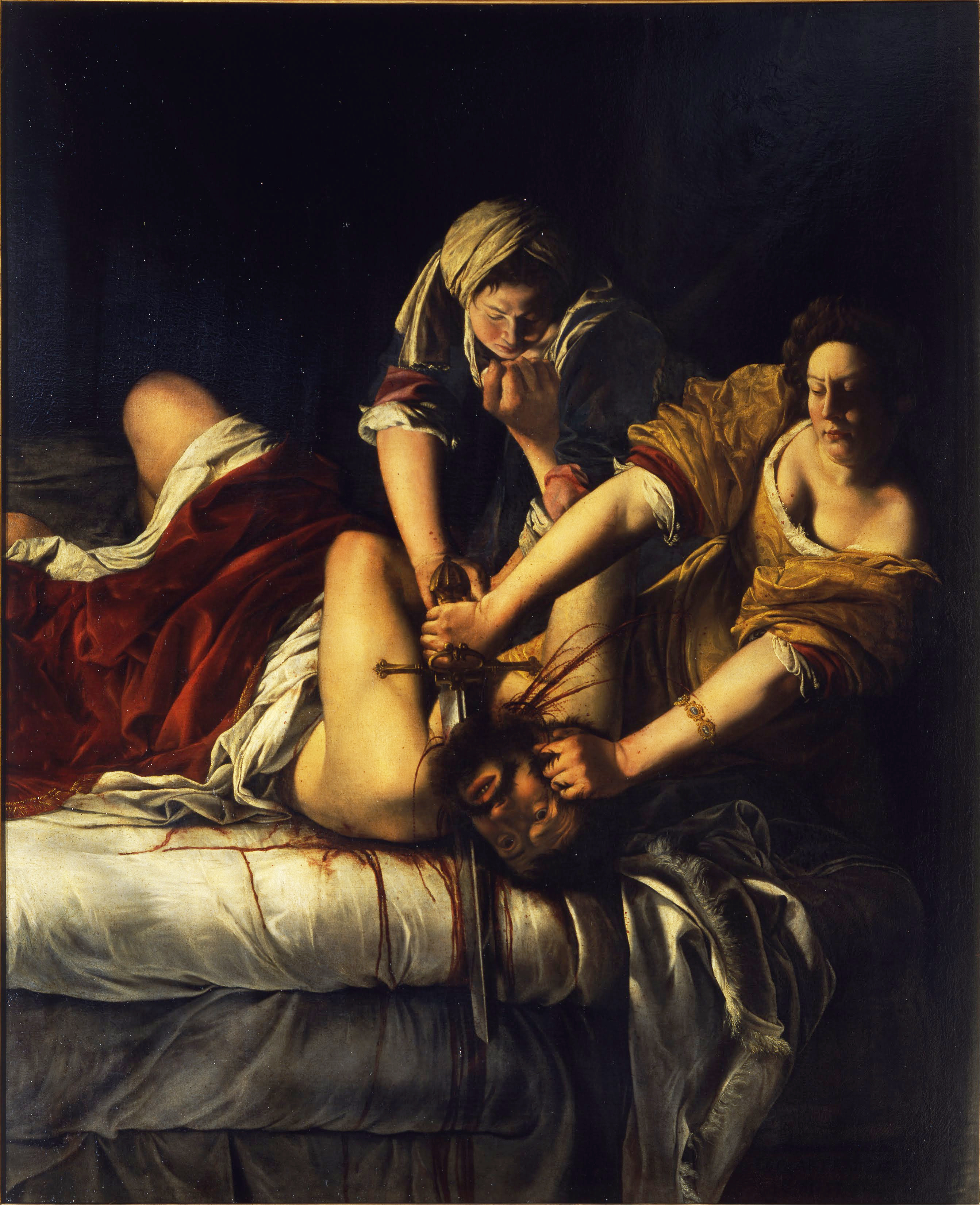
Artemesia Gentileschi, Judith Slaying Holofernes C. 1612-1616
Artemisia Gentileschi was a prominent woman painter in a world dominated by male artists. Her oeuvre is characterized by paintings with a focus on female subjects. The most famous one of these is Judith slaying Holofernes.
This huge painting depicts an Old Testament tale in which a woman and her maid defeat a lustful man, eventually beheading him. Artemisia arranges her work so that violence is the piece's focal point to create the greatest impact.
PETER PAULIN RUBENS RAPE THE DAUGHTERS of LEUCIPUS 1618
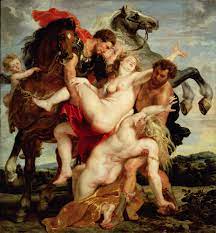
Peter Paulin Rubens Rape The Daughters Of Leucipus 1618
Peter Paul Rubens is a major figure of the Baroque Period. He did not use light and shadows to create drama but rather a vibrant palette of colors and dynamic movement. The Rape of Daughters of Leucippus is a classic example of his style, with voluptuous women twisting and bending their bodies to create a sense of violence.
FRANCISCO de ZURBARAN SAINT SERAPION 'S MARTYRDOM 1628
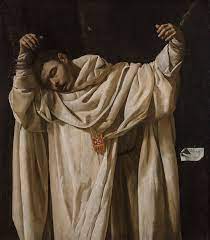
Francisco De Zurbaran Saint Serapion 's Martyrdom 1628
Francisco de Zurbaran is a Baroque painter known as "Spanish Caravaggio." His painting The Martyrdom Of Saint Serapion, which features a white-clad male against a dark background, represents his style. Zurbaran's use of chiaroscuro and the simple but powerful compositions are similar to Caravaggio's. This was probably a major influence.
PETER PAUL RUBENS, JUDGMENT of PARIS C. 1636

Peter Paul Rubens, Judgment Of Paris C. 1636
Ruben's Judgement of Paris tells the story of the mythological tale where Paris has to choose the most beautiful goddess among Hera, Athena, and Aphrodite. Artists used this subject to explore the female ideal. Rubens' sensual style is used to portray the story unfolding in this painting. The line of posing women leads the viewer's eye across the canvas.
GEORGES DE LA TOUR THE PUNITIVE MAGDALENE C. 1640
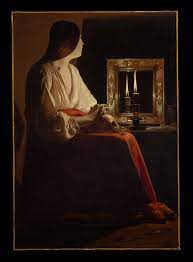
Georges De La Tour The Punitive Magdalene C. 1640
Georges de La Tour, a French painter best known for his candle-lit works, is remembered by many. Penitent Magdalene is a simplified version of the religious icon Magdalene with hands above a skull, which serves as a Memento Mori and watching the shadowed walls. De La Tour uses tiny sources of light to create a powerful composition that draws the viewer's eye immediately to the white patch on Magdalene’s tunic.
REMBRANDT THE NIGHTWATCH 1642
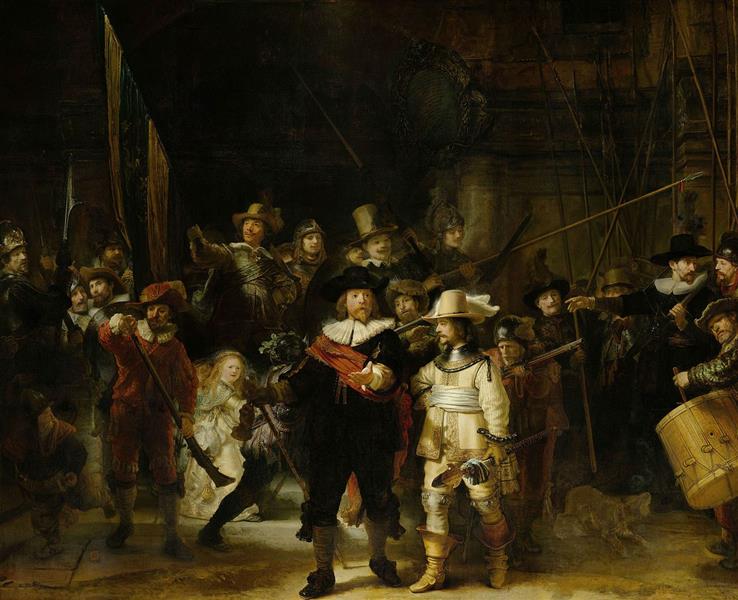
Rembrandt The Nightwatch 1642
Rembrandt van Rij is one of the most prolific Dutch Golden Age artists. One piece stands out among his impressive work: a group portrait called the Night Watch. This massive 1652 work is a hallmark of the Dutch Golden Age. It is not only a masterful display of Rembrandt's ability to render dozens of people almost lifesize but also a work of Baroque art with dramatic light and shadow effects and movement.
NICOLAS POUSSIN THE ABSURDITY OF THE SABINE WOMEN 1643

Nicolas Poussin The Absurdity Of The Sabine Women 1643
French artist Nicolas Poussin developed a Baroque style based on vivid colors, clarity, and line. His paintings conveyed drama by arranging numerous figures in active positions, as shown in Abduction of the Sabine Women. The chaos is created here by the dozens and dozens of figures running, jumping, twisting, and obstructing this large space.
CHARLES LORAIN, EMBARKATION of the Queen of Sheba 1648
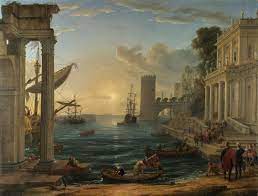
Charles Lorain, Embarkation Of The Queen Of Sheba 1648
Charles Lorrain, a French artist who spent most of his career in Italy, was one of the leading landscape painters of the Baroque era. Embarkation Of The Queen of Sheba depicts a biblical scene where the Queen of Sheba departs to visit King Solomon.
Lorrain, unlike some other artists in this period, does not use chiaroscuro and movement. He creates a feeling of grandeur in the harbor scene with the classical buildings that line the blue water as the Sun descends in the distance.
DIEGO VELAZQUEZ, A PORTRAIT of INNOCENT X 1650

Diego Velazquez, A Portrait Of Innocent X 1650
Diego Velazquez, a baroque painter, was an important figure in the Spanish court. He is known for his exquisite and honest portraits. The Italian government employed him to paint the Portrait of Innocent I during one of his visits to Italy.
Velazquez painted a portrait of Juan de Pareja, a well-known Spaniard born in slavery. He prepared for this occasion by painting the portrait. The piece shows the impressionist brushstrokes Velazquez used in his portrait of the Pope. It also has a limited palette. Velazquez released Pareja a few years later, and he was able to become an independent artist.
Velazquez is known for his ability to capture the truth of the subjects without a lot of flattery. When the pope first saw the completed picture, it was reported that he exclaimed: "It is too true!" The pope accepted the picture but said it was "too true". Many historians consider the portrait to be one of the best ever created.
DIEGO VELAZQUEZ LAS MENINAS 1656

Diego Velazquez Las Meninas 1656
This massive, multi-layered painting, titled Las Meninas, depicts a young princess of 5 years old in a white dress with her ladies-in-waiting. Two people with dwarfism and a Spanish mastiff sleeping are on the right. Velazquez is on the left, painting his portrait while looking at the viewer.
The background also features characters such as Margaret Theresa’s companion, Marcela de Ulloa, talking with a shadowed guard, and Jose Nieto, the queen's chamberlain, standing in the doorway. On the mirror on the wall behind the mirror, there is a hidden portrait of Philip IV and Queen Elizabeth II.
ELISABETTA SIRNANI, PORTIA WOUNDING HER THICK 1664

Elisabetta Sirnani, Portia Wounding Her Thick 1664
Elisabetta Sirani, another important female artist from the 17th century, lived only to 27 years old but left behind an impressive portfolio. Sirani, like Artemisia, was interested in women’s figures.
Her picture Portia Wounded Her Thigh depicts a classic story where Portia intentionally harms herself to prove her equality to her husband, Brutus.
No Comments Yet...